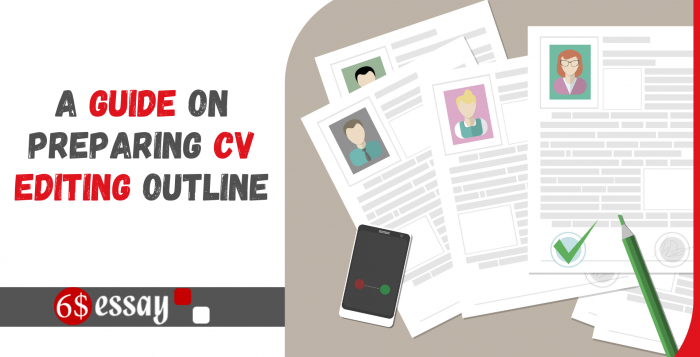September 30, 2023 10:49 am
Victoria
CV Editing

Certainly! Here\’s a guide on preparing an outline for CV editing your CV (Curriculum Vitae) in the English language:
I. Introduction
– Start with your full name and contact information (phone number, email address, LinkedIn profile, and location).
– Write a concise objective or summary statement highlighting your career goals and what you bring to the table.
II. Professional Summary
– Summarize your professional experience in a few sentences.
– Mention your key skills, achievements, and qualifications.
III. Education
– List your educational qualifications in reverse chronological order.
– Include the institution\’s name, degree earned, graduation date, and any relevant honors or awards.
IV. Work Experience
– List your work experience in reverse chronological order.
– Include the company\’s name, location, your job title, and the dates of employment.
– Provide detailed descriptions of your roles and responsibilities, emphasizing accomplishments and quantifiable results.
– Use action verbs to begin each bullet point.
V. Skills
– Create a section for technical and soft skills.
– Include both hard skills (e.g., programming languages, software proficiency) and soft skills (e.g., communication, leadership).
– Tailor the skills section to match the job you\’re applying for.
VI. Certifications and Training
– List any relevant certifications or training programs you\’ve completed.
– Include the certification name, the institution or organization that issued it, and the date of completion.
VII. Projects (if applicable)
– If you have relevant projects, such as research, freelance work, or personal initiatives, showcase them here.
– Include project titles, descriptions, your role, and any outcomes or impact.
VIII. Awards and Honors (if applicable)
– Mention any awards or honors you\’ve received throughout your academic or professional journey.
IX. Professional Affiliations (if applicable)
– If you\’re a member of professional organizations or associations, include them here.
X. Languages (if applicable)
– List any languages you are proficient in, indicating your level of fluency (e.g., fluent, intermediate, basic).
XI. References
– You can either list references directly on your CV or simply state “References available upon request.”
XII. Formatting and Style
– Ensure consistent formatting throughout the document (font, size, headings, bullet points, etc.).
– Use a professional and legible font (e.g., Arial, Calibri).
– Keep the CV concise, ideally within one or two pages.
– Proofread for grammar and spelling errors.
XIII. Tailoring
– Customize your CV for each job application by highlighting relevant skills and experience.
XIV. Review and Feedback
– Seek feedback from peers, mentors, or professional resume editors to improve your CV.
Remember that your CV should be a dynamic document that evolves as your career progresses. Regularly update it with new achievements and experiences. Additionally, adapt it to suit the specific requirements of the job you\’re applying for.



